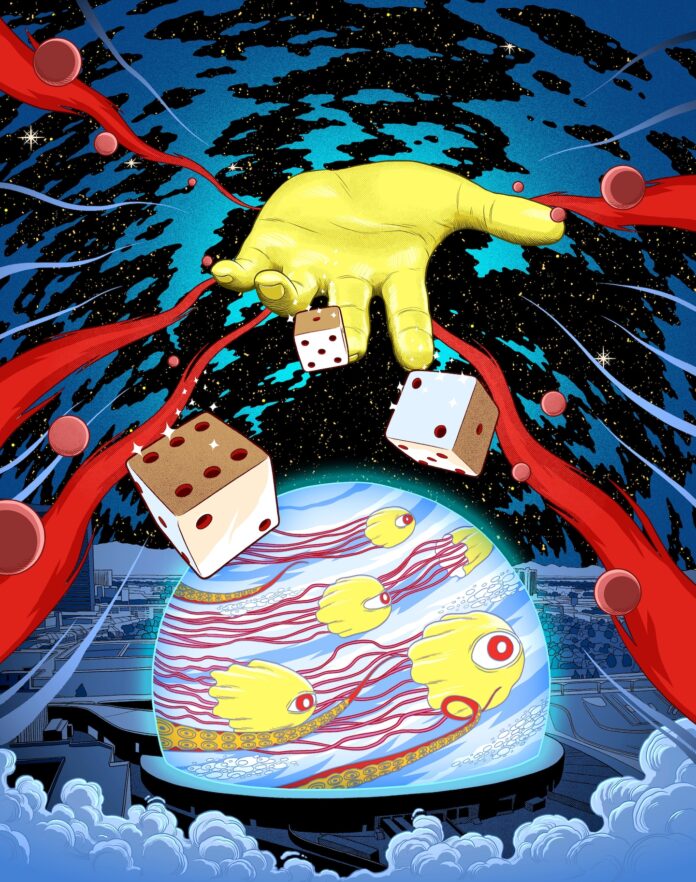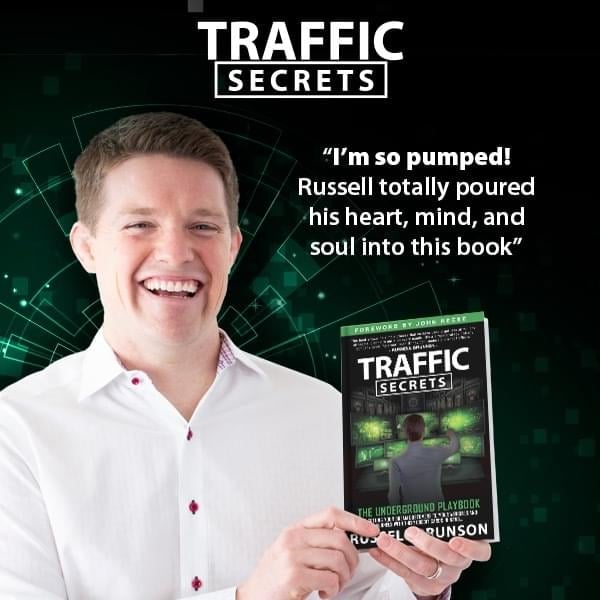And yet as Phish prepared to take up the Sphere’s second residency slot, and the band’s fervid fans bid up aftermarket prices well beyond U2’s, guitarist and frontman Trey Anastasio hesitated.
What would an extra weekend of shows mean for quality control?
He posed the question to show director and co-creative director Abigail Rosen Holmes. “It’ll be good,” she told him. “But it won’t be great. If you just do four nights, it’s going to blow minds.”
That was all Anastasio needed to hear.
“Then we’re not doing it,” he recalled telling her.
That is the Phish way. To the uninformed, it may come across as yet another breezy, shambolic jam band, inheritor of the Grateful Dead’s traveling circus. But devoted members of the Phish “herd” understand the complex dynamics that drive these erstwhile Vermont hippies. Anastasio and his bandmates want every show to be the aural equivalent of an Easter egg, offering joy and surprise and an unreplicable magic. At some shows, fans encounter an unannounced rock opera, staged with actors and elaborate props; at another, they’ll each walk away with a free box of mac-and-cheese. Phish never repeats a set, and it refuses to commemorate its classic albums.
Not exactly what you expect to find among the A-list nostalgia acts that dominate the Strip, which in coming months will host residencies by Mariah Carey, Garth Brooks and the Killers, re-creating their 2004 album “Hot Fuss.”
“There is a quality of Vegas where older bands go to play their old album, to make a lot of money late in the twilight of their career,” Anastasio says. “That’s not what we’re interested in.”
So Phish will sweep into town on April 18, intent on playing about 80 songs over the course of four concerts, repeating none. And yes, that will include most of the new material from “Evolve,” an album fans won’t hear until its July release. (The title track drops Thursday.)
Meanwhile, the Sphere’s high-tech 160,000 square-foot LED screen will offer the band a proper swirling canvas for its elaborate visions, as channeled by Holmes. She got her start as lighting director on the Talking Heads’ groundbreaking 1983 Stop Making Sense tour and has since collaborated with Roger Waters, Peter Gabriel, Miley Cyrus and Janet Jackson.
She is also — as is required in the Phish camp — an excellent secret-keeper. Anastasio divulges that the four shows will be linked by a theme, but neither he nor Holmes will say what it is.
“I’m not trying to be cagey,” she says. “I just want people to not have any idea what’s about to happen when they come into the room. That’s part of the fun of this.”
The path to the Vegas Sphere began in an incongruous place: the tie-dye-friendly campus of the University of Vermont, where Anastasio jammed with longtime bassist Mike Gordon and dress-wearing drummer Jon Fishman for the first time on Dec. 2, 1983, in a student dining hall. A fourth member, guitarist Jeff Holdsworth, dropped out before graduation but the others kept going, soon joined by keyboardist Page McConnell.
It was a Burlington band through and through, imbued with the crunchy spirit of a city that had elected Bernie Sanders mayor, launched Ben & Jerry to ice cream fame and nurtured Bread & Puppet, a politically radical theater company known for its antiwar, anti-nuke parables told through gigantic puppets.
Phish built its loyal audience over a decade through constant touring, without MTV or radio hits. Eventually, after signing with Elektra, the band played “Saturday Night Live” and David Letterman’s show. But the musicians followed the Grateful Dead’s grass-roots model by creating their own company, Dionysian Productions, to handle tours and merch.
It was perhaps not surprising that Phish intersected with certain other aspects of Dead culture. Every show was a freewheeling party, awash in exotic substances. As the party grew, so did Anastasio’s personal struggles, and the band made the difficult decision to break up. The farewell show in Coventry, Vt., grossed almost $9 million, but the guitarist remembers a more dizzying number — the 3,000 friends on the guest list for the out-of-control backstage festivities.
But Phish never fully drifted apart. The musicians were best friends as much as bandmates. Even at Anastasio’s lowest point — he was briefly jailed after a 2006 narcotics arrest — he remained in regular communication with Fishman, Gordon and McConnell. Stranded in Upstate New York for 14 months as he completed a felony drug-court program, he found himself picking up the phone to call McConnell.
“Like, a lot,” Anastasio recalls. “And he wasn’t happy because the band had broken up. Yet I never got that. I would call him, and he would answer the phone, and we would talk. I can’t even say how much I care about that man.”
“I guess in my heart, I never actually believed that the band was over,” explains McConnell.
In 2009, a rehabilitated Anastasio returned to the stage with the rest of Phish. There were some changes. The band members signed to a management company, Red Light, to liberate themselves of the pressure of overseeing a staff. And they altered the culture. No more open bar. Not even a can of beer. There was no discussion about this. It just happened.
“I think everyone was relieved to stop having these huge scenes backstage,” says McConnell. “It was just, you know, Trey’s sober and do we really want a bunch of people drinking backstage?”
Even while the easy, loose-limbed sound of classic Phish sprang back to life, the revived band’s prankster glee seemed to swell in scope and ambition. Lighting master Chris Kuroda handled a rig that grew so large it couldn’t always fit into arenas. At a show in 2009, Fishman was shot out of a cannon. In 2017, Phish played 13 Madison Square Garden concerts in a row (now known as “The Baker’s Dozen”) in which not a single song was repeated and a special doughnut was distributed to everyone in the audience. In 2018, a Halloween show turned into the debut of Kasvot Växt, an alter-ego band of white-suited Scandinavian ’80s-synth enthusiasts, with an entire set of new songs written just for the gig.
But there was only one way for Phish to maintain the organic, improvisational sound that fans fell in love with while carrying out its ever more theatrical visions.
The mandate was to allow the musicians to remain in the moment, plucking jams out of thin air, and not let them get distracted by the cues involved with sending a giant drone whale soaring over the crowd or an all-male kick line in flesh-tone bodysuits dancing onto the stage in time for the closing chords of “Carini.”
Phish could only achieve this by shifting even more power to the band’s in-house control freak: Anastasio.
His wife, Sue, calls him the “relentless communicator.” He is the one who bonds the disparate figures who handle everything including sound, lighting, production and design in the Phish universe. Anastasio has a mantra, “Teams win,” that he repeats more than 10 times in a two-hour interview. He also peppers the conversation with an endless list of names (Garry … Abbey … Chris … Amy … “the French guys at Moment Factory” … and of course Page, Mike and Fish) of people who deserve credit.
But ultimately, he concedes, this is not a democracy. Having one leader with never-ending energy is how you launch three major production-number set pieces in 18 months while also playing the Sphere and recording a new album.
“There was a time when we started doing these New Year’s gigs, where we’d all four be together, and all the management would all sit in a room and have multiple meetings of all of us, and eventually that kind of wore down to just Trey taking that on himself,” says McConnell. “If there was something that was really major, we would all discuss it together. But most of these things are just details, you know what I mean?”
The Sphere run started with a conversation at a Rangers game with James Dolan, the chief executive of Madison Square Garden, where Phish has played 83 times (more than Elton John, less than Billy Joel), and the mastermind behind the new Vegas venue.
There was initially talk of Phish going in first. But after U2 ultimately opened the venue last September, Anastasio and Holmes went to see the gig.
A longtime fan, Anastasio admired the way U2 commanded the arena. But he knew the Phish gig would have to be different. Take those hero shots of Bono and the Edge, looming large on the LED wrap as they strutted the stage.
“It suited Bono because he is that kind of star,” says Anastasio. “But that’s not me. I don’t do that. And same with Edge. There’s one song where he just rocks into the camera. He steps forward and he’s 800-feet high on the wall. I’m not going to do that.”
So what would he do? Holmes asked him early on.
“I said, ‘What do you think this is? Do you think this is one of those New Year’s productions or is this a Phish show in a great new environment?’” she recalls. “And his thought is that it’s a Phish show in a great new environment. And so that’s sort of how we framed thinking about all of the creative choices we’ve made. We wanted to absolutely make the most out of the room and also support Phish doing what Phish does best.”
Obviously, there would have to be four different sets for the four nights. That was barely a discussion. Sure, it would have been a lot easier for Holmes and the tech folks if they could stick to the same 20-song set list each night. But that would be like telling Jackson Pollock to paint poodle portraits.
“What won’t let us repeat a set is the fact that we don’t want to,” says McConnell. “We want to keep it fresh for ourselves and fresh for everybody else.”
Kuroda, the light master, would be on hand to work with Holmes. But Phish’s usual rig wouldn’t fit into the Sphere. And then there was the challenge of the sound.
At the U2 show, Anastasio was struck by how mono the mix was, as if all the speakers were crammed together, booming from the small stage on which the band performed. He discovered that there was a reason for this: The Sphere’s shape spawns reverberations that make it difficult to effect a true stereo sound without creating bounces and delays that would distract people on one side or the other.
Enter veteran Phish sound man Garry Brown. With the help of the Sphere staff, he crafted a miniaturized version of the venue in Rock Lititz, Phish’s regular rehearsal space in central Pennsylvania
“I don’t know what limitations U2 put on themselves, but obviously with them being the first one in the building, it was a learning experience,” says Brown. “With my mini-Sphere, I could technically go in, sit in section 201, which is all the way left, you know, far away, all the way over. And I could technically sit there and place the instruments where I felt they could work. And then I could move around to 13 different seats in the venue digitally, to see if what I was doing was working. And so I’ve created a soundscape that is a lot wider than what U2 did.”
For Anastasio, the Vegas gigs will offer a chance to experiment with a new venue packed with sonic and visual opportunities. But then, having achieved mastery over the Sphere, Phish will happily put it in the past. This summer, the band will move on to multiple dates in Mansfield, Mass.; East Troy, Wis.; and the four-day Mondegreen Festival in the Woodlands of Dover, Del.
And Anastasio has his own visions yet to fulfill for those shows. He is always happiest with the one he just completed.
“I thought the Mexico shows [in February] were just crushing in terms of music,” he says. “Just the music itself. I know bands always say, ‘Well, our last shows were the best shows,’ and most of the time they’re lying. I’m actually not.”



